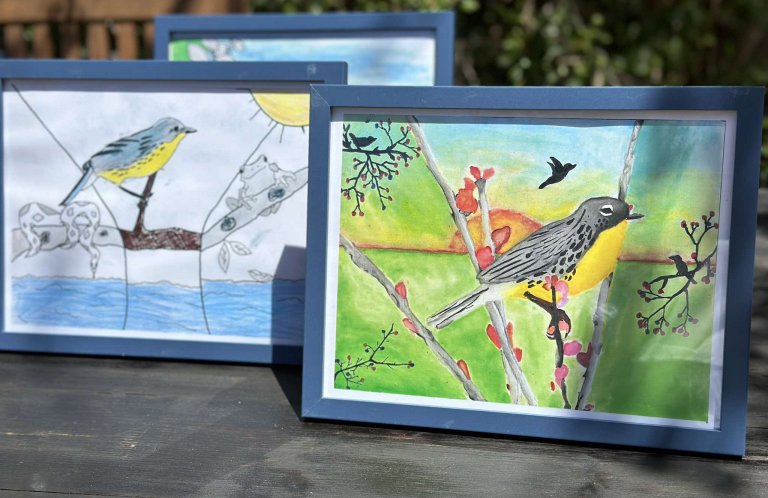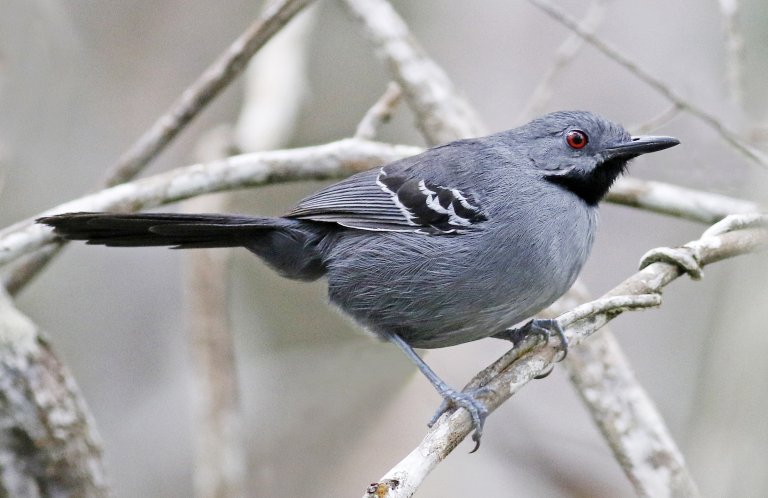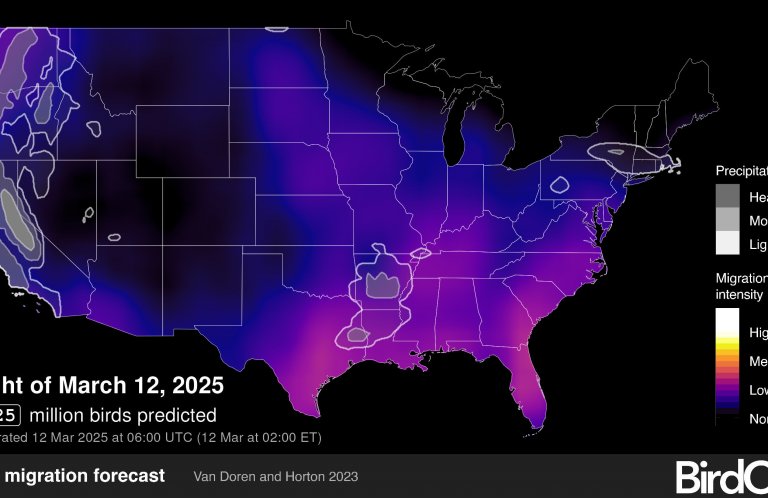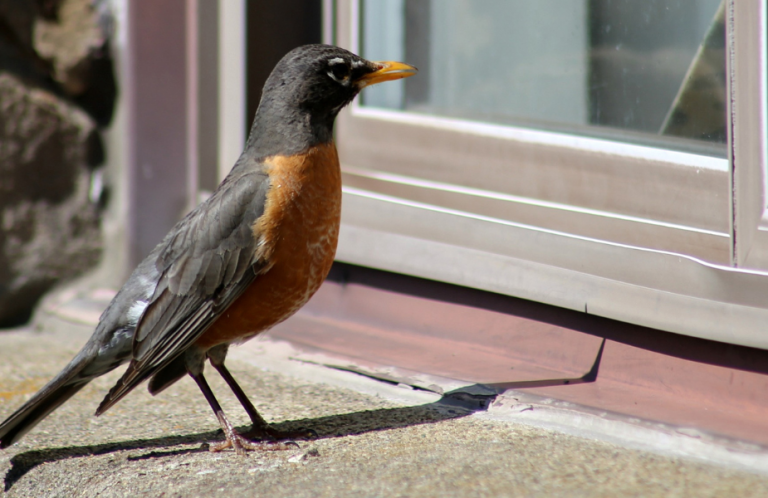Tracking the Mystery of the Nesting Petrel: Chum, Net Launchers, and Teamwork
A little over two months ago, I was bobbing in the Gulf Stream, smelling like fish guts and trying to maneuver our small inflatable dinghy so the bow would face downwind toward Endangered Black-capped Petrels. On long wings, the birds were flying upwind toward the chum block we had left floating in front of us. My passenger was Chris Gaskin, a New Zealander with a knack for catching birds at sea. He was perched precariously in the little boat with a pneumatic net launcher aimed toward the birds. This scenario played out again, and again, and again, and again….
And I still can't think of a better way to have spent my birthday.
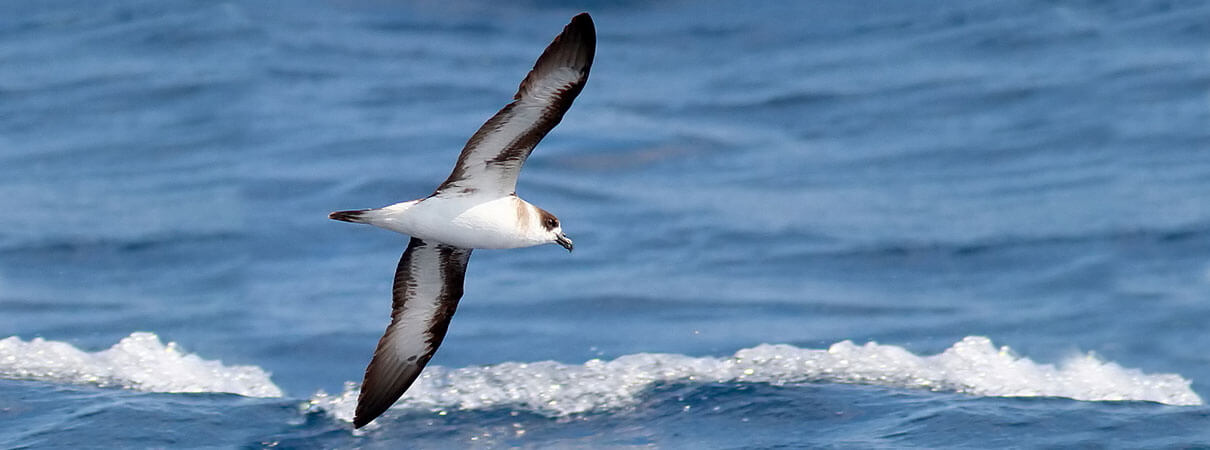
Black-capped Petrel. Photo by Alfred Yan
After four days at sea off the coast of Cape Hatteras, North Carolina, aboard Captain Brian Patteson's Stormy-Petrel II, we achieved our goal of deploying ten satellite tags on Black-capped Petrels. The effort was led by American Bird Conservancy in partnership with Patrick Jodice (USGS) and Yvan Satgé (Clemson University) of the South Carolina Cooperative Fish and Wildlife Research Unit.
This was the first time a medium-sized petrel in the “gadfly” genus Pterodroma had been caught on the wing at sea. Our goal was to track these birds, learn more about their ocean habitat use — and hopefully track some of them back to as-yet-undiscovered nesting sites. The species is known to breed on Hispaniola, which includes the countries of Haiti and the Dominican Republic. While conservation actions at known nesting areas there are critical to the survival of the species, we are also interested in learning whether this bird still breeds on other islands. Evidence of birds rafting offshore of Dominica and flying overland in the evenings strongly suggests that birds breed there, but nests have yet to be found. Other less-compelling evidence suggests birds may breed in Cuba, Jamaica, and on the tiny Lesser Antillean island of Guadeloupe. If some of the birds we tagged off North Carolina return to one of these islands later in the year, it would be the first concrete evidence of nesting outside Hispaniola in more than a century.
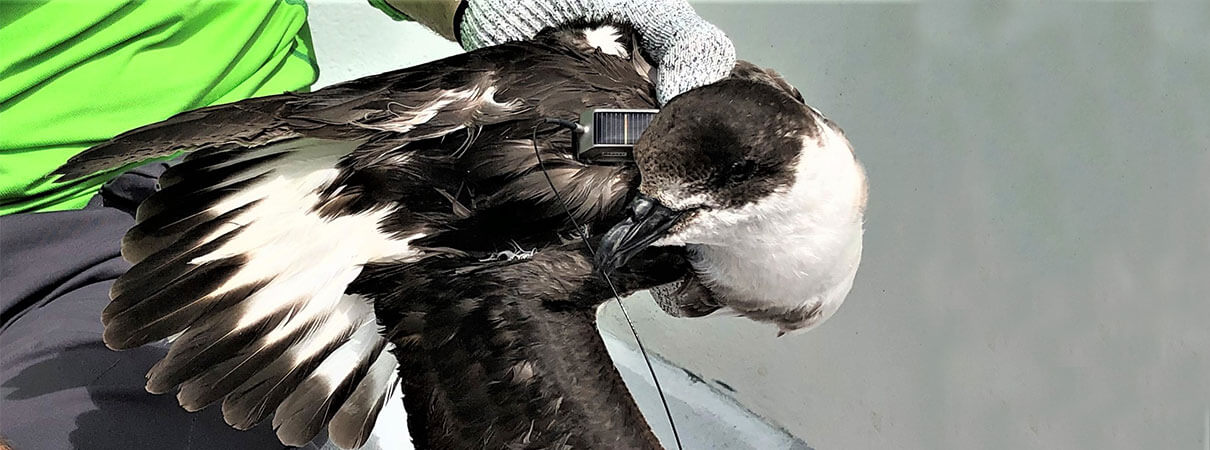
Black-capped Petrel with transmitter. Photo by Daniel Lebbin
To maximize our chances of locating a new nesting island, we focused our tagging efforts on as many white-faced morph birds as we could catch. White-faced birds have not been documented at Hispaniola nesting sites. They are larger, appear to undergo molt earlier in the year, and are more common earlier in the year off North Carolina. The thinking is that these “early birds” may come from islands other than Hispaniola.
Since our pelagic expedition to catch these birds, back in May 2019, we have been faithfully tracking the tagged individuals. You can see the map here. All of the tags were transmitting in May. By June, we were down to six working tags. We used some of the lightest satellite tags available for this project, with a goal of minimizing the weight the birds have to carry, and maximizing the probability the tags would stay on long enough to lead us to their nesting islands. These light tags are more prone to failure – antennas can come off, or circuit boards can blink out, or in some cases a feather can cover the solar panel, causing the battery to die. We think this was the case for at least one bird, as a seventh tag came back on line in July, presumably because the battery was able to recharge again. Currently, we're tracking three white-faced birds, three dark-faced birds, and one intermediate morph.
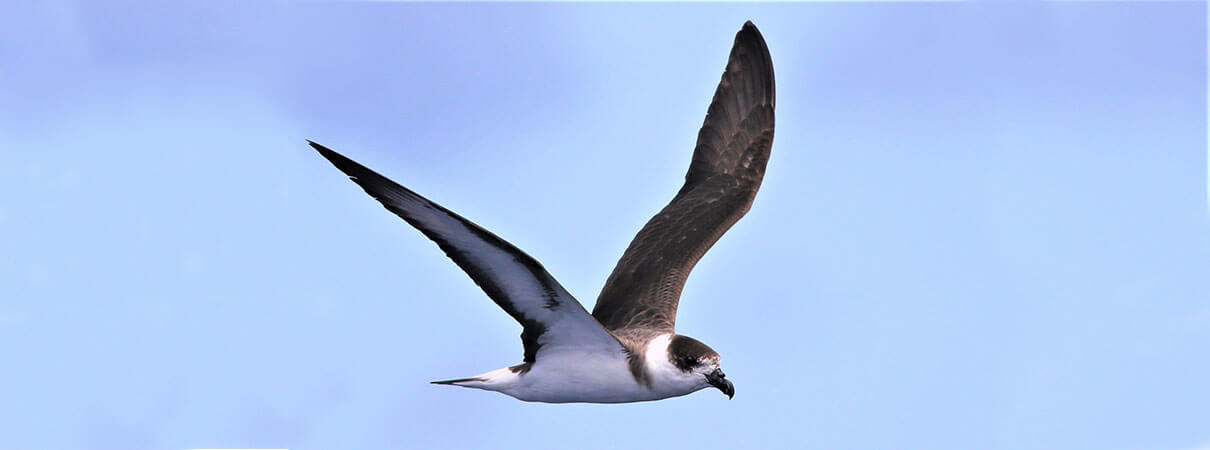
Black-capped Petrel. Photo by Daniel Lebbin
The most interesting thing we have observed in the tracking data is that the white-faced birds have tended to reside farther north and east than the dark-faced morphs. And, as of August 1, one white-faced bird is in the middle of the Atlantic, halfway between North America and Africa. Could it be on the way to the Cape Verde Islands, where a white-faced bird was recently photographed?
In the meantime, we continue to check the map and hope the tags continue to work for another few months, and that some of these birds lead us to a new nesting location – one that we can work to protect so we can help this species survive into the future.
ABC is grateful for the major gift support of this project provided by the Mohamed bin Zayed Species Conservation Fund, Dick Newell, Apex Expeditions, Thomas Wilberding, Dean Demarest, Jennifer Wheeler, Tamima Itani, and Sharon Forsyth.
We are also grateful to the following individuals for their contributions: Dale Thomas, Donald Beck, Dr. Steven Tracy, Kathryn Sieving, Keith Camburn, Keitha Kinne, Mark Zablotny, Chris Moore, Andrew Farren, Brian Swanson, Dennis Fravel, Fred Andres, Richard Trieff, Elisabeth Fisher, Elizabeth Koch, Frances Greenlee, Allison Wright, Barbara Arum, Cheryle Jones-Johnson, Deanna Knickerbocker, Letitia Noel, Linda Zatopek, Louisa Havstad, Myra Dremeaux, Parrie O'Keefe, Amelia Dias, Ruth Kelley, Sandra Myer, Sheila Magee, Thomas McKee, and Yvan Satge.
 | Brad Keitt is ABC's Oceans & Islands Program Director. |





































